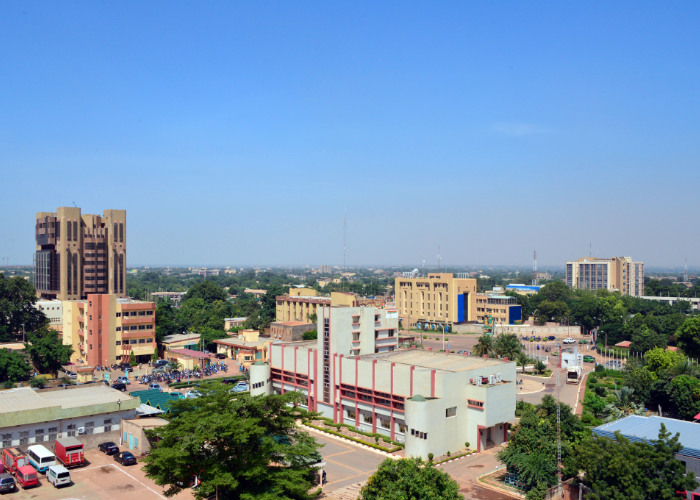Early Settlements:
Ouagadougou has been inhabited since the 15th century, initially serving as a small village inhabited by the Mossi people. Over time, it grew into a regional center for trade and commerce, attracting merchants from across the region.
Colonial Era:
During the late 19th century, Ouagadougou fell under French colonial rule as part of French West Africa. The city witnessed rapid urbanization and infrastructure development under colonial administration, becoming the capital of the colony of Upper Volta in 1919.
Independence and Growth:
Following independence from France in 1960, Ouagadougou continued to expand as the capital of the newly established Republic of Upper Volta, which was later renamed Burkina Faso in 1984. The city became a hub for political, economic, and cultural activities in the region.
Cultural Diversity and Heritage
Traditional Architecture:
Ouagadougou boasts a blend of traditional and modern architectural styles, with mud-brick buildings and thatched-roof houses coexisting alongside contemporary structures. The city’s architecture reflects its rich cultural heritage and historical significance.
Arts and Crafts:
The arts and crafts scene thrives in Ouagadougou, with bustling markets and artisan workshops showcasing a wide range of traditional handicrafts, including wooden carvings, textiles, pottery, and jewelry. These crafts serve as both cultural expressions and sources of livelihood for local artisans.
Festivals and Celebrations:
Ouagadougou hosts several vibrant festivals and cultural events throughout the year, celebrating the diverse traditions and customs of Burkina Faso’s ethnic groups. The biennial Pan-African Film and Television Festival of Ouagadougou (FESPACO) is one of the continent’s largest film festivals, showcasing African cinema and promoting cultural exchange.
Contemporary Life in Ouagadougou
Urbanization and Infrastructure:
As Burkina Faso’s largest city and economic center, Ouagadougou is characterized by rapid urbanization and infrastructural development. The city is home to modern amenities such as shopping malls, hotels, restaurants, and entertainment venues, catering to residents and visitors alike.
Education and Research:
Ouagadougou is a major hub for education and research, with several universities, research institutions, and vocational training centers located within the city. The University of Ouagadougou, founded in 1974, is the country’s largest and most prestigious university, offering a wide range of academic programs.
Economic Opportunities:
Ouagadougou serves as a center for commerce, industry, and entrepreneurship, attracting businesses and investors from both within Burkina Faso and abroad. The city’s economy is diverse, with key sectors including trade, manufacturing, services, and agriculture, providing employment opportunities and driving economic growth.
Transportation and Connectivity:
Ouagadougou is well-connected by road, air, and rail networks, facilitating domestic and international travel and trade. The city is served by Ouagadougou International Airport, which offers flights to major cities across Africa and beyond. Additionally, Ouagadougou is a hub for regional bus services, providing affordable and convenient transportation options for commuters and travelers.
Cultural Fusion:
Ouagadougou’s cosmopolitan atmosphere is reflected in its vibrant cultural scene, characterized by a fusion of traditional and contemporary influences. The city is home to a diverse population representing various ethnicities, languages, and religions, contributing to its cultural richness and dynamism.
Conclusion
Ouagadougou, the capital of Burkina Faso, embodies the country’s spirit of resilience, diversity, and progress. From its rich history and cultural heritage to its vibrant contemporary life and economic opportunities, Ouagadougou continues to evolve as a dynamic and thriving metropolis in the heart of West Africa.
Frequently Asked Questions (FAQs)
- What does the name “Ouagadougou” mean? The name “Ouagadougou” is derived from the Mooré language and translates to “the place where people get honor and respect.”
- What are some popular attractions in Ouagadougou? Popular attractions in Ouagadougou include the National Museum of Burkina Faso, the Moro-Naba Palace, the Ouagadougou Grand Market, and the Bangr-Weoogo Urban Park.
- Is Ouagadougou safe for tourists? While Ouagadougou is generally safe for tourists, travelers should exercise caution and be aware of their surroundings, especially in crowded areas and at night.
- What is the climate like in Ouagadougou? Ouagadougou has a tropical savanna climate characterized by hot temperatures year-round, with a rainy season from May to October and a dry season from November to April.
- Are there any cultural festivals held in Ouagadougou? Yes, Ouagadougou hosts several cultural festivals throughout the year, including the biennial Pan-African Film and Television Festival of Ouagadougou (FESPACO), the NAK: Traditional Music Festival, and the International Crafts Fair of Ouagadougou (SIAO).
